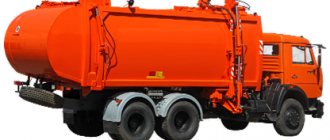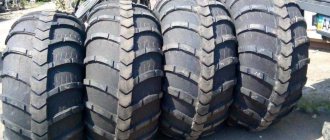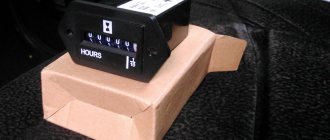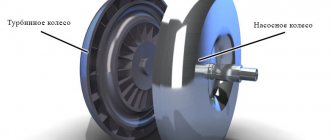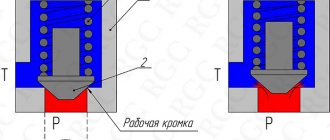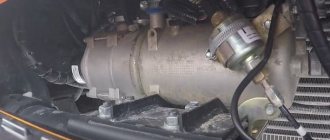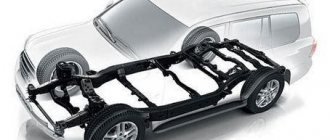Vehicle owners who use tubeless tires do not think about what valves are on their wheels. But in vain.
For reference. Among car enthusiasts and cyclists, a nipple is understood as a spool valve - a shut-off valve. This interpretation of the meaning of the word “nipple” is often found in publications on this topic, which is fundamentally incorrect. Nipple is translated from English as “nipple”. It is a connecting element, with a locking device inside, between media with different pressures. This device on a wheel is also called a valve, which is not entirely true, but close in meaning.
Valve for tubeless tires - Lada 2108 logbook
Car tire nipple (tire valve)
An automobile valve is an element that we rarely pay attention to. However, it is extremely important to maintain the correct tire pressure, which affects a number of vehicle parameters. Damaged tires can lose up to 0.7 bar per week, which can lead to dangerous driving situations. So when should you replace your valves?
The valve is a small but very important element of the wheel. The car valve allows you to regulate the pressure in the tire - without it this would not be possible. This makes it easy to inflate and deflate the tire without damaging the rubber structure. Thanks to this, drivers influence the level of tire pressure, which leads to increased safety while driving.
Scale of the problem
Usually, the pressure decreases slightly due to a damaged nipple, so you can safely drive to a car service/tire repair shop, where the faulty part will be replaced with a new one and you can drive as before.
But it happens that the air-permeable valve in the nipple gets jammed or it freezes in the lower position in the cold due to moisture (for example, after washing). In this case, the tire quickly goes flat, and further driving in a car with a damaged tire is not possible.
What to do in this case?
Hidden valves
If you are interested in the types of automotive valves, you can't miss concealed valves, which are gaining more and more popularity. These are shorter tubes than Schroeder proposed, with an extended structure that does not extend beyond the tire rim. Hidden tire valves are installed using a special cable. They are more expensive and a little more demanding to replace, but beyond the visual value they provide increased protection against tearing or premature rubber failure. Most often these types of valves are used for aluminum wheels.
Attention! Whether we have standard or concealed valves, the assembly must be left to specialists.
Insufficient pressure increases tire damage while driving.
DIY nipple repair
The design of all modern nipples is reliable and practically does not fail. When it breaks, as a rule, air comes out abruptly.
The following are the most common problems:
- Internal separation of the locking part of the nipple from the rod or removal of the rod under air pressure. This often happens when air is inflated inaccurately, and road versions often suffer, since they are more fragile than automobile ones.
- Tearing of the nipple from the place of gluing. It also occurs when the tire is inflated inaccurately or when driving with lowered tires.
The design of the nipples is one-piece and, as a rule, cannot be repaired. Their cost is low and it is easier to buy a new one. But what if the problem arose on the road?
In case of failure, the problem can only be eliminated by vulcanization - changing the molecular network of the material using a chemical process to impart certain properties. It can only be done if you have certain materials and tools, and you can’t do it on the road. But you can solve the first problem.
You can temporarily fix a nipple malfunction as follows:
- We take the smallest patch from the kit.
- We tear the scarf into 4 parts.
- We press a piece of patch into the cap, without which the problem cannot be solved, and add a drop of water to the cap to create a water seal.
- Then we inflate the wheel and after inflating, put on the cap and tighten it.
The nipple design is non-separable; the component parts can rarely be found on sale separately. In this case, it is important that the cap is intact, since it is subject to great pressure.
Damaged valve
Tires receive various types of damage when driving. Dynamic acceleration, braking or maneuvering lead to the fact that the rubber is regularly deformed and after some time returns to its original state. The same pressure is applied to the valve, which can immediately deflect up to 30°. The frequency of this phenomenon can damage its structure, exposing the tire to loss of seal. Even with a slightly distorted valve, tire pressure can drop by 0.2 to 0.7 bar per week, increasing the risk of wheel damage while driving. Too low a pressure level can cause many problems. Significantly increases braking distance (even in wet conditions by as much as 20%!), threatening to lose control of the vehicle or even tire explosion. Insufficient pressure also reduces the life of tires, suspension and braking systems.
Why does air leak out of a tire?
Before replacing the old nipple on a car wheel, you need to make sure that the reason for bleeding air from the tire lies precisely in this element.
There are several main reasons why air loss occurs, that is, the internal pressure in the tire decreases:
- insufficiently tight fit of the contact surface of the fitting to the surface of the tire;
- presence of damage to the wheel rim;
- a cut or puncture of a tire caused by a collision with some objects or deliberate actions of other persons;
- an old and worn tire on which microcracks have formed, and they cause a loss of pressure;
- air passes through the spool or damaged nipple base.
It is the nipple with the spool that quite often turns out to be the main cause of pressure loss, when the tire and wheel are completely intact and do not have any defects or damage.
Replacing valves
The best time to replace a car valve is during the seasonal tire rotation. In general, curing plants offer these services as a standard package. Even if we have replacement wheelsets and don't have to remove the tire from the rim, replacing the valve shouldn't be a problem. Various valve models are available in the market. The longest ones are reinforced metal valves that can be replaced every other season. Rubber equivalents are best replaced every six months. This is a habit that will greatly increase our safety while traveling. Regular replacement of car valves does not require large expenses. Moreover, they are inexpensive. Reinforced or visually attractive models (such as chrome valves) cost a little more. There are also much more expensive options on the market.
When replacing tires, it's worth thinking about valves.
How to unscrew a nipple using improvised means
The cars left the factory with metal valves already installed. Their reverse side was the original key. There were 2 half rings on it, which were separated by a slot. With such a key it was possible to unscrew and tighten the nipple without any hindrance.
Nowadays, car wheels are produced with plastic caps, which are simply not intended for use on a nipple structure. Specialist. The key can be purchased at a car dealership. How to unscrew the nipple without special tools? devices?
You can find many tips on the Internet to solve this problem, but not all of them are effective in practice.
If this situation happens on the road, then you can ask other drivers for the key. The tire shop can also help with the problem; they have a special key in any case. But if you still can’t find it, you can try to unscrew the clamp using tweezers or a regular table fork. If you use a fork, its tines should be sharp.
You need to carefully turn out such a part, and first you should use a knife to crush the two inner tines of the fork towards the center. They must be positioned so that they can fit smoothly into the nipple. Next, you just need to insert a fork into it and unscrew the spool. In the case of tweezers, you must use a long medical instrument. But in this case, you need to fix its pointed ends in a stationary position and use it in the same way as a fork. But not everyone has such tweezers at hand, but there is a fork in every home. Next, the question may arise: how to tighten the nipple? You can screw it in the same way you had to unscrew it, there is no difference.
You may be interested in this About Westlake tires
Unscrewing the spool
Wheel valve - what functions does it perform?
A tire valve is a check valve that allows air to be forced into the tire. In addition, the part does not release the pressurized pressure from the tire. There are so many different types of valves. It is sometimes called the "nipple".
The part consists of several elements:
Each of the listed parts has its own characteristics.
When choosing a valve, it is worth remembering that it is subject to serious loads during operation. This part must be selected very carefully to avoid safety issues.
The valve is only used on tubeless tires. On tube tires, the valve is part of the tube without being separated from it.
Replacing a beaded nipple
Replacement of the beaded nipple is required for tube tires. In this case, the valve is an integral element of the chamber and changes exclusively with it.
Replacement with beading may also be necessary in the case of tubeless tires. The reason for this is the strong sticking of the old valve or its all-metal manufacture. To replace in this way, it is recommended to follow the instructions below.
- Secure the vehicle using the parking brake if work is being carried out on the front axle.
- Place wheel chocks to prevent the vehicle from moving unintentionally.
- Loosen the fastenings of the wheel on which the nipple is being replaced.
- Jack up the car.
- Place a stop to prevent the car from falling if the jack breaks.
- Unscrew the wheel mount and remove it.
- Remove the cap from the nipple.
- Release any remaining air. To do this, you can press the air valve with a screwdriver or release excess pressure, for example, using a pressure gauge.
- Disassemble the wheel.
- Remove the damaged nipple. If necessary, unscrew its fastenings.
- Install a new valve.
- Reassemble everything in reverse order.
- Inflate the tire to the recommended pressure.
- Check for air leaks.
How does a wheel valve work - what elements does it consist of?
Frame
Valves can be produced in several types of housings. There are three options available for sale:
Let's look at the types of valves in more detail.
The most common are rubber "nipples". They can be installed on both stamping and cast wheels. Usually withstands up to 4.5 atm. There are models of different lengths. They are not afraid of temperature changes.
Collapsible ones consist of several components that are assembled during installation. Gaskets are required in the kit. Made of steel and chrome plated. They are practically not afraid of exposure to reagents, temperature changes, or water. Since they are made of metal, they can withstand heavy loads very well.
The hidden valve is made of metal. Technically similar to collapsible. Differs in the absence of a bar for pumping. The spool is located inside the element that attaches the “nipple” to the wheel rim. Used on high-speed cars, recommended for installation on alloy wheels.
Spool
The shut-off device in the valve is the spool. It is worth understanding how this structural element works. Technically, it allows you to connect cavities with different pressures, without allowing air to pass from one side to the other. The wheel nipple of a passenger car is somewhat different from a similar device for bicycles, although it has a general operating principle.
The spool operates due to the displacement of the moving element relative to the main part. As a result, it can allow air into the tire when inflated, but does not allow any air back in once the inflation is stopped. If necessary, pressing the spool valve can bleed off some of the air.
The following types of spool are distinguished.
- for tube tires;
- standard for tubeless tires;
- reinforced, recommended for use on sports cars.
Cap
The cap is often considered a decorative element, although it serves an important function. The cap protects the nipple from dirt. Cleanliness allows the valve to maintain its performance characteristics much longer. Therefore, you should definitely check the presence of caps on the wheels. They are attached by simply screwing the “nipple” onto the bar.
Nowadays you can find plastic and metal caps on sale. Drivers often prefer to buy metal caps, especially if the wheel rim is chrome-plated. In fact, it is better to choose the plastic option. The metal can freeze to the valve in winter, or simply become stuck under the influence of reagents. This will result in the need to completely replace the nipple.
If the cap is green, the tire is inflated with nitrogen.
Types of nipples
Nipples used on cars can be made of various materials. The most popular options are discussed in the table below.
Table - Options for materials for making nipples
| Material | Note |
| Rubber | The body is entirely made of durable rubber. The internal mechanism is made of non-ferrous metal. |
| All metal | For production, brass or chrome-plated steel is used. It cannot be replaced without removing the tire, as it is secured with a nut. |
| Rubber-metal | Consists of a combination of chrome steel, brass and rubber. |
Rubber metal valve
All of the above valves are successfully used on cars. The rubber nipple is used on low-speed passenger cars. It has little effect on the weight distribution of the wheel. One of its main advantages is its low cost and ease of installation without removing the tire.
The rubber nipple cannot withstand the loads created by centrifugal force at high speed. Its body becomes covered with cracks and collapses. Therefore, on most tubeless tires you can find rubber valves.
On dynamic machines and trucks, valve nipples operate under significant pressure in the wheel and under the significant influence of centrifugal force. Therefore, all-metal valves are installed on such vehicles.
Automotive nipples vary in seat size. Manufacturers decided to come to a common standard. Therefore, on most modern machines, the nipple socket has a diameter of 8 mm.
Despite the unification of the seat, on some machines the holes for the valve have a diameter of 4, 6, 11.3 or 15.7 mm. All branded nipples have markings that describe the size of the socket.
Types of wheel valves
To correctly answer the question of how to choose a valve, it is necessary to take into account that they may have different operating pressures. There are only two options. One is standard nipples. They can withstand loads of up to 4.5 atm. Designed for passenger cars and sports cars. Their device is as simple as possible.
Reinforced valves can withstand pressure of 5-7 atm. Installed on trucks and buses. If your car often drives fully loaded, you should take a closer look at nipples like these.
Which nipple is better? Tips for choosing
The two types of nipples under consideration, Shrader and Presta, are the most common and are almost similar in their performance. When choosing, it should be noted that if there is a hole on the rim with a diameter of 6 millimeters, Presta should be used.
If you need to install a Shrader, then you can drill out to a diameter of 8 millimeters. When performing work, it is worth remembering that the edges after drilling must be protected. For Presta you will need a bicycle pump.
Nipples rarely fail if treated with care. The presence of caps is mandatory even though they are not intended to improve sealing.
When to change the valve
Even though a tire can last up to 5 seasons, valves fail more often. Safety rules recommend replacing them every six months. More precisely, with each seasonal tire change.
The nipple has several weak points:
- Frame. If it is made of rubber, it may crack. Especially in winter.
- Spool. Sometimes damaged during use.
The wheel valve is an important element. It must be selected correctly. This will provide an increased level of safety when driving.
How to disassemble a tubeless wheel?
How to dismantle a car wheel?
How to repair a tire yourself
How to remove and install wheel covers
Tire repair kit: when it comes in handy, composition, how to use
Radial tires - design features and advantages
Sports tires: types, characteristics, advantages
Source
What to do
You should start from simple to complex. You can do the following:
- Drive to the nearest tire shop. Provided that the service is close, you can “reach” it. But, it should be remembered that a strongly deflated tire has a large contact patch with the road. This creates additional friction force with the road, which can lead to overheating and deformation of the tire, and the wheel rim may also be damaged. Therefore, driving for a long time with such a wheel is highly not recommended.
- Replace the wheel with the faulty valve with a spare one. The most optimal and safest solution to the problem. But, if there is no spare wheel, there is another way out of a difficult situation.
- Replacing a damaged nipple with your own hands. This is difficult and will require certain skills and time. However, it is quite doable.
How does a wheel valve work?
The valve consists of 3 elements: body, spool and cap. In the design of wheels with tubeless tires, the housing is installed on the disk in the mounting hole. A check valve - a spool (nipple) - is screwed into the cavity of the fitting. The spool is removable, so it can be changed periodically. A cap is screwed onto the top of the body, which protects the spool from dirt and gives the valve an aesthetic appearance.
Frame
The case comes in 3 types: rubber, collapsible and secret. Rubber valves are the most common. They are installed on all types of disks: stamped, cast and forged. Capable of maintaining pressure up to 4.5 bar. They are made from synthetic rubber (ethylene-propylene), which is suitable for use in various temperature ranges. Different body lengths allow the valve to be used on different vehicles.
Rubber fittings and spool seals should be made of EPDM (ethylene propylene rubber) synthetic rubber. This is a requirement of SAE 1205-1206. Synthetic rubber has a wider temperature range for operation, which ranges from -56ºС to +121ºС
Collapsible body - consists of metal structures such as steel, aluminum and brass. For tightness, gaskets are present in the connections of the elements. Such valves are more attractive. Capable of high quality resistance to environmental influences: reagents, stones, sand and branches. The line of collapsible fittings is represented by a wide range of sizes and designs. For long-term operation they will require care: cleaning, washing, treatment with protective compounds.
Wheel valve sizes
Valves come in a variety of shapes and sizes to cover a wide range of vehicles. Fittings are available for: passenger tubeless wheels, truck tubeless wheels and tubed wheels. For ordinary “passenger cars” they may have the following marking: TR-412L - b/c rubber valve (angle 90°) l=32mm, d hole=11.3mm. Length range from 22 to 51 mm.
The designation TR is a steel disc. If the abbreviation TRC is written, it means a fitting for an alloy wheel. The letter “C” means that the valve has a chrome lining (C-chromium). The larger the number in the marking, the longer the valve and the more pressure it can withstand.
For cargo wheels, the fittings are curved, L-shaped, 51 - 120 mm long. They can be designated as follows: TR-571 cargo valve (b/c) l=86mm, d hole=15.7mm. For tubed wheels, the purpose is indicated, for example, TR-1175 cargo valve (tubes) (angle 90°) l=114mm.
The majority of valves are marked and numbered as TR..., which corresponds to the international standard established by the Tire and Rim Association. The numbers in the designation must fully characterize the product, in accordance with the rules of the Association. However, not all manufacturers provide complete information. Experts from auto publications have noted that the more information a product contains, the higher the reputation of the developer and the better the quality of the valve.
How often should a wheel valve be changed?
The rubber of the valve body is destroyed during operation. It is negatively affected by temperature, ultraviolet rays of the sun and ozone. The spool is made of brass, so it gradually oxidizes and wears out mechanically. The valve spring weakens and the rubber nipple bushing loses its density.
Caps are mercilessly stolen by vandals and children, which leads to contamination of the internal element and accelerated wear. Therefore, it is recommended to change the valves annually during seasonal “re-shoeing”. Demountable and internal fittings can be replaced once every 2 years, as they are more durable.
Summary. The wheel valve is one of the main elements of tubeless tires. It is subject to increased loads and exposure to aggressive environments. It is recommended to monitor the fittings and change them more often. To choose the right valve, study its characteristics.
Source

